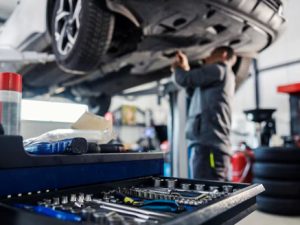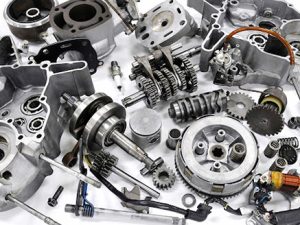Table of Contents
- Understand Your Vehicle’s Needs
- Research the Manufacturer and Brand Reputation
- Consider Genuine vs. Aftermarket Parts
- Assess the Quality of Materials
- Evaluate Compatibility and Specifications
- Review Warranties and Guarantees
- Explore Pricing and Availability
- Seek Expert Advice and Recommendations
Understand Your Vehicle’s Needs

To choose high-quality auto parts, begin by understanding your vehicle’s specific needs. Refer to the owner’s manual or online resources to identify the parts required for maintenance or repair. Keeping track of your vehicle’s service history can also provide insights into parts that might need replacement soon.
Research the Manufacturer and Brand Reputation
Not all auto parts are created equal, even if they appear identical. Research manufacturers and brands to understand their reputation in the market. Read customer reviews and professional evaluations to gauge the reliability and quality of the parts they produce.
Example of Popular Auto Part Brands
| Brand | Reputation |
|---|---|
| Bosch | Renowned for high-quality precision engineering and innovation. |
| ACDelco | Offers a comprehensive range of OE replacement parts with reliable performance. |
| Moog | Excellent for steering and suspension components. |
Consider Genuine vs. Aftermarket Parts

Choosing between genuine and aftermarket parts can be challenging. Genuine parts are made by the vehicle’s original manufacturer and guarantee perfect fit and function, though they tend to be pricier. Aftermarket parts, on the other hand, are produced by third-party companies and can vary widely in quality and cost. It’s crucial to read reviews and research thoroughly before selecting aftermarket options.
Assess the Quality of Materials
The quality of materials used in auto parts significantly impacts their performance and longevity. Look for components made from robust, durable materials. High-quality parts often feature advanced technologies or materials designed to enhance durability and efficiency.
Material Comparison for Auto Parts
| Material | Applications | Advantages |
|---|---|---|
| Steel | Engine components, impact parts | Durable, strong under stress |
| Aluminum | Body panels, engine blocks | Lightweight, corrosion resistance |
| Composite | Body construction | Lightweight, customization options |
Evaluate Compatibility and Specifications
Make sure the parts you choose are compatible with your specific vehicle make and model. Consider the specifications such as size, fit, and electrical configurations. Incorrect specs can lead to performance issues or even damage to the vehicle.
Review Warranties and Guarantees
High-quality auto parts often come with warranties or guarantees that reflect the manufacturer’s confidence in their product. Before purchasing, investigate the terms of these warranties and ensure they offer adequate protection against early failure and defects.
Explore Pricing and Availability
Pricing can be indicative of quality, but it’s also essential to compare prices across multiple suppliers to avoid overpaying. Keep in mind the availability of parts, especially for rare or older vehicles, which might require more extensive research.
Price Ranges for Common Auto Parts
| Part | Price Range |
|---|---|
| Brake Pads | $25 – $150 per set |
| Air Filter | $15 – $50 |
| Spark Plugs | $10 – $30 each |
Seek Expert Advice and Recommendations
Finally, do not underestimate the value of professional advice. Mechanics and auto experts can provide invaluable insights into quality auto part choices. They can recommend parts based on experience and may have insights on the latest advances in automotive materials and technologies.
For purchasing high-quality auto parts, visit Choose High-Quality Auto Parts for a reliable selection of components suited to your vehicle’s needs.
Air Suspension in EVs: Energy Efficiency and Range Considerations
Electric vehicles (EVs) are reshaping the automotive landscape with their zero-emission powertrains and advanced technologies. Among these innovations, air suspension systems have gained traction in EVs for their ride comfort, load leveling, and aerodynamic advantages. However, because EVs are highly sensitive to energy consumption, integrating air suspension raises unique questions…
Preventing Moisture Damage in Air Suspension Systems: Practical Tips
Air suspension systems are engineered to deliver smooth, adjustable ride quality in modern vehicles. However, one of the most overlooked enemies of these systems is moisture. When water enters the compressed air network, it can cause corrosion, valve failure, frozen lines in cold climates, and reduced compressor life. This article…
How to Detect and Trace Air Suspension Leaks: Methods and Tools
Air suspension systems are praised for delivering smooth rides and adjustable comfort. However, they are prone to air leaks due to age, road debris, or faulty components. Detecting and tracing these leaks early is vital to prevent further damage, preserve performance, and avoid costly repairs. In this article, we’ll explore…
The Most Common Failure Points in Air Suspension Systems by Mileage
Air suspension systems provide exceptional ride comfort, automatic leveling, and adjustable ride height — but like any mechanical system, they experience predictable wear patterns over time. Understanding which components typically fail at specific mileage intervals helps vehicle owners plan preventive maintenance and avoid sudden, costly breakdowns. This article outlines the…
Diagnostics, Maintenance, and Repair (Air Suspension–Specific)
Air suspension systems offer superior ride comfort, adjustable ride height, and load-leveling — but they also demand careful diagnostics, maintenance, and occasional repair. In this article, we explore how to properly diagnose problems, maintain your system, and safely conduct repairs for longevity and reliability. Common Symptoms of Air Suspension Problems…
Core Air Suspension Components & Function
Air suspension systems have transformed vehicle dynamics by replacing traditional steel springs with air-filled components. This allows adjustable ride height, improved comfort, and consistent handling under varying loads. In this article, we explore the core components of an air suspension system, explain how they function together, and highlight their advantages….
Top Symptoms of Worn Ball Joints and How to Spot Them Early
Ball joints are vital components of a vehicle’s suspension and steering system, allowing the control arms and steering knuckle to move smoothly in multiple directions. Over time, these joints experience significant stress from road impacts, steering forces, and vehicle weight. When ball joints begin to wear, the symptoms may start…
Upper vs. Lower Ball Joints: Key Differences and Their Roles
Ball joints are small but crucial components of a vehicle’s suspension and steering system. They connect the control arms to the steering knuckle, allowing the wheel to move freely both vertically (suspension travel) and horizontally (steering direction). While upper and lower ball joints may appear similar, their functions, loads, and…
What Are Ball Joints and How They Work in a Vehicle’s Suspension System
Ball joints are foundational components of a vehicle’s suspension and steering system. Although small and often overlooked, they play a critical role in maintaining stable handling, precise steering control, and safe wheel alignment. Understanding how ball joints work helps drivers identify early symptoms of wear and avoid dangerous failures on…
Heavy-Duty Truck Suspensions: Balancing Load Capacity and Ride Quality
Heavy-duty trucks are the workhorses of the transport and logistics world. Whether hauling construction materials, towing trailers, or carrying tons of cargo across long distances, their suspension systems must perform a delicate balancing act — supporting massive loads without sacrificing ride comfort or safety. Modern truck suspensions are far more…